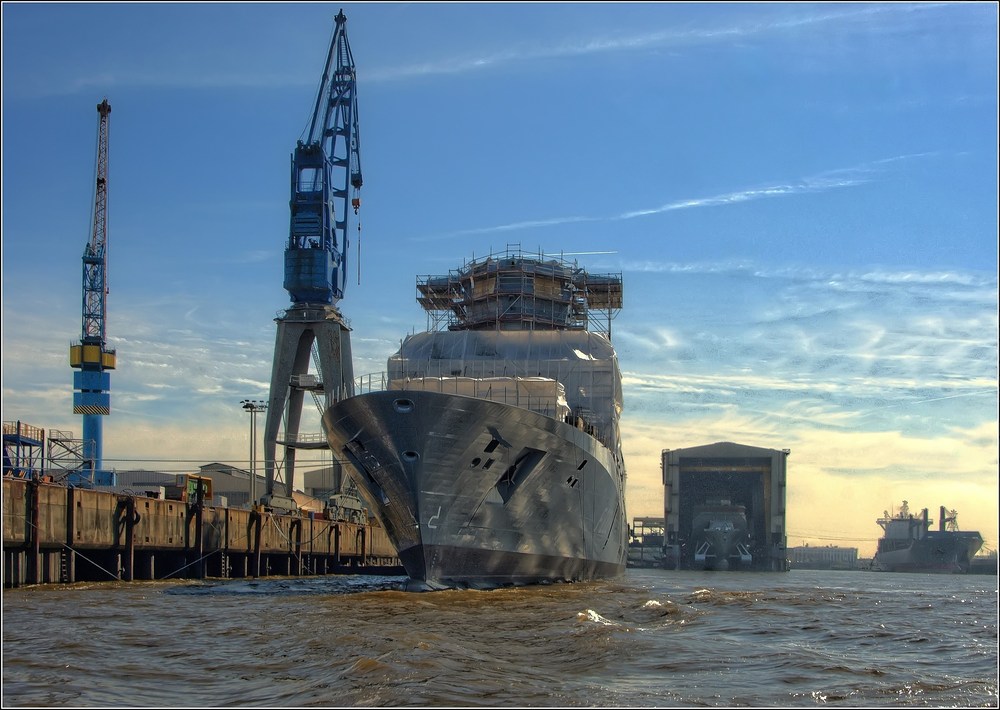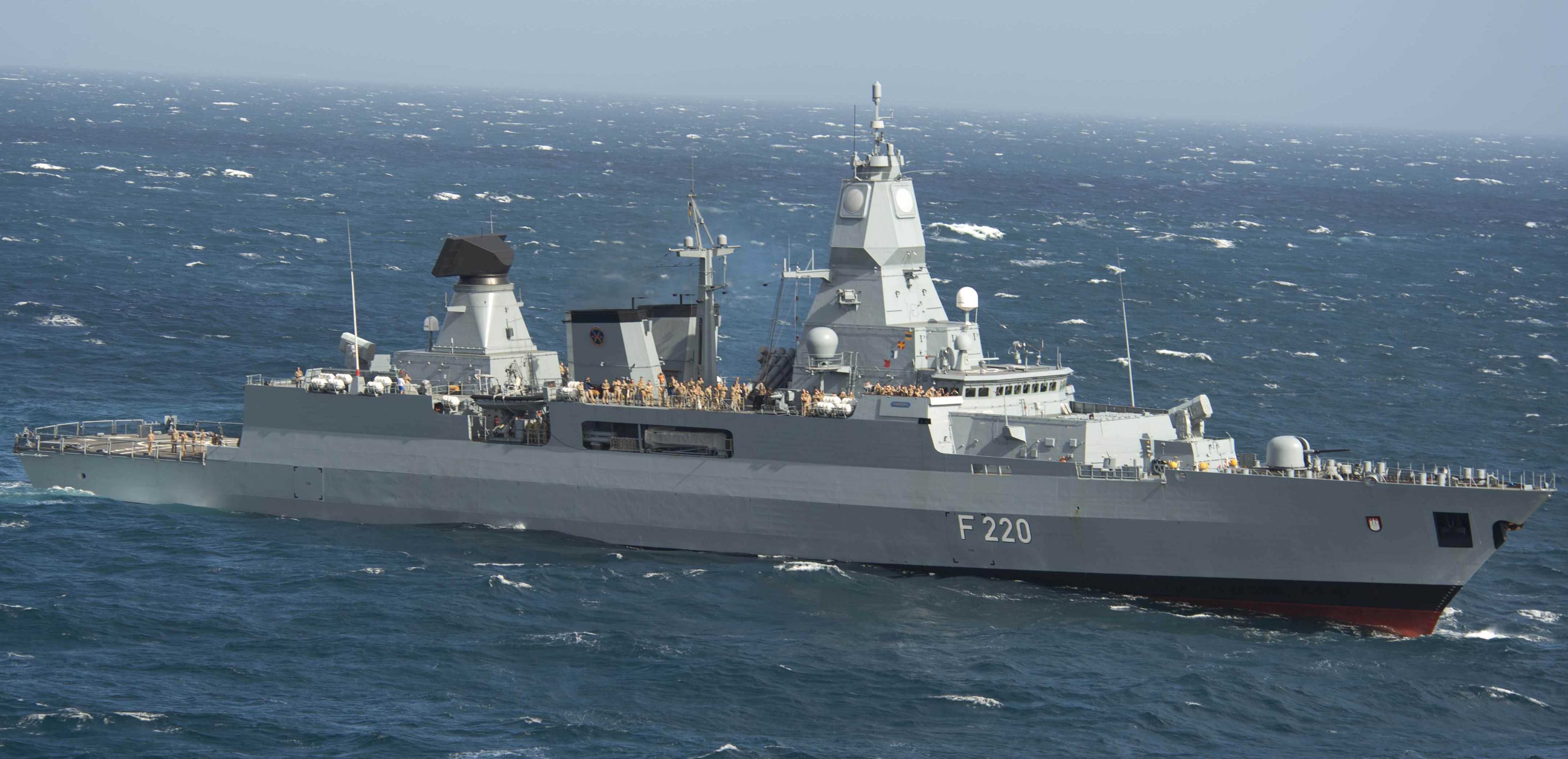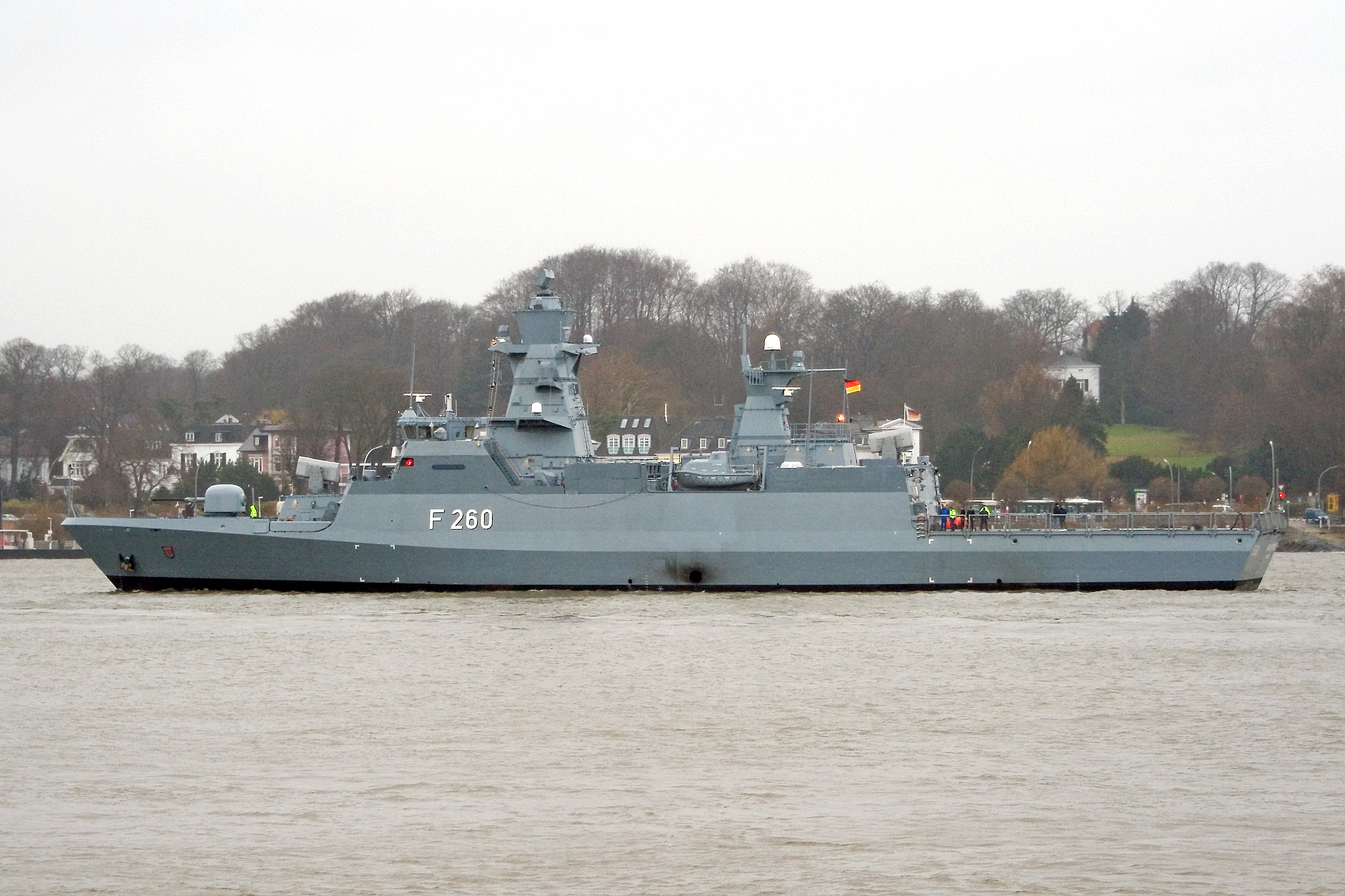Key developments continue in Germany's F 125 frigate programme
Michael Nitz, Wedel, Germany - IHS Jane's Navy International
03 May 2015
The fore section of the German Navy's F 125 frigate Sachsen-Anhalt in transit between the Lürssen Werft and Blohm + Voss shipyards. With Lürssen building ship fore sections and Blohm + Voss the rear sections, the image shows the progress being made on the third ship. Source: Michael Nitz/Naval Press Service
Key Points
- German Navy christens second F 125 frigate, Nordrhein-Westfalen
- First-in-class Baden-Wuerttemberg has recently received its main gun fit, and the fore section of ship three Sachsen-Anhalt has been shipped to Hamburg for assembly with its rear sections
The German Navy has christened its second F 125 frigate, the next phase in a number of key recent developments in the frigate programme.
The German Navy's F 125 frigate Nordrhein-Westfalen (F 223) was christened on 16 April at ThyssenKrupp Marine Systems in Hamburg. In the background is the fore section of F 125 ship three, FGS Sachsen-Anhalt. (Michael Nitz/Naval Press Service)
Nordrhein-Westfalen (F 223) was christened by TKMS on 16 April at the Blohm + Voss shipyard in Hamburg.
In June 2007 under a EUR2 billion (USD2.25 billion) contract, Germany ordered four F 125 frigates from the ARGE F 125 industry consortium, consisting of TKMS and Lürssen Werft Shipyard. Under TKMS leadership on the programme, Lürssen is responsible for constructing and fitting out the fore sections of each ship; these sections have been built at Lürssen's Bremen and Wolgast yards. Rear section construction and outfitting, along with whole-ship assembly, is carried out for TKMS at Blohm + Voss.
The F 125 has been designed to support national and alliance interests, but also to support crisis prevention, crisis response, and intervention and stabilisation operations. In particular, the frigates are designed for greater endurance, including being able to deploy away from home port for up to 24 months. This improved availability in areas of operations is enhanced by a two-crew concept ('Alpha' and 'Bravo' crews), with options for crew rotation on station to reduce requirements for long transits.
First-in-class
Baden-Wuerttemberg (F 222) is scheduled for delivery to the German Armed Forces Procurement Agency (BAAINBW) in mid-2017.
Nordrhein-Westfalen is expected to be delivered in mid-2018. All four will be delivered by 2020.
The German Navy's F 125 frigate Baden-Wuerttemberg (F222), with the recently fitted Oto Melara 127/64 Light Weight gun system. Second-in-class Nordrhein-Westfalen is in the background. (Michael Nitz/Naval Press Service)
The 7,100-ton frigates are 149 m long and 18 m in beam. Their CODLAG (combined diesel electric and gas) propulsion system generates a top speed of more than 26 kt. Unrefuelled endurance is 21 days. The frigates are fitted with a 127 mm Oto Melara Light Weight medium-calibre gun system, two 27 mm naval light guns, five 12.7 mm machine guns, two RAM launchers, and four Rheinmetall MASS decoy systems. Two helicopters can be embarked. Four 10 m, high-speed rigid hull inflatable boats (RHIBs) can be employed for special forces operations.
IHS Jane's Fighting Ships says that the ships will carry eight Harpoon Block 2 missiles.
The frigates' maximum complement is 190 (120 crew, plus space for 50 special forces personnel and 20 aircrew).
Baden-Wuerttemberg has recently received its Oto Melara gun system. The fore section of ship three,
Sachsen-Anhalt (F 224), also has recently been delivered from the Lürssen Werft yard in Wolgast to Blohm + Voss in Hamburg.
The F 125 frigates are replacing the navy's eight F 122 Bremen-class frigates, of which three currently remain operational - FGS
Karlsruhe (F 212), FGS
Augsburg (F 213), and FGS
Lübeck (F 214).
Key developments continue in Germany's F 125 frigate programme - IHS Jane's 360













